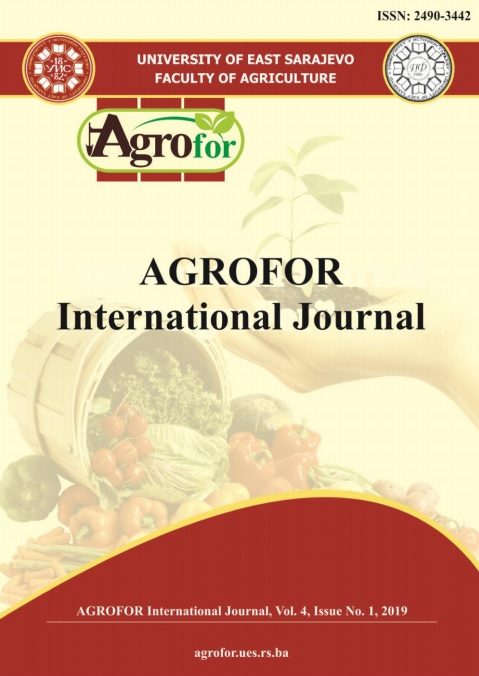EFFECT OF DN1 BACTERIAL STRAIN APPLIED BY DIFFERENT METHODS ON SOME MORPHOLOGICAL CHARACTERISTICS OF STRAWBERRY CV. SAN ANDREAS (Fragaria X ananassa Duch.)
DOI:
https://doi.org/10.7251/AGRENG1901057SAbstract
There have been quite intensive studies on the use of Plant Growth-Promoting
Rhizobacteria (PGPR) in agriculture. Acidovorax facilis strain DN1 is one of the
PGPR commonly used. The effect of DN1 bacterial strain on some morphological
characteristics of strawberry cv. San Andreas was investigated. The DN1 bacterial
strain was applied via soil, leaf, and soil + leaf, for 3 months (once a month) to
strawberry plants. The DN1 spores were prepared with 0.2% boron, 10% corn
starch and distilled water. The bacterial solution was applied to plants at the
following day with a hand pump (to leaves; 50 cc) and graduated cylinder (250 cc
each 5-liter pot). After 3 treatments, plants removed from pots and data collected.
According to the results, DN1 bacterial strain often had a positive effect on the
morphological and fruit characteristics. Spraying treatment was the most effective
way for the stem and root traits we evaluated (crown diameter: 36.87 mm; stem
fresh weight: 63.64 g; leaf number: 38.69; root fresh weight: 34.89 g). In addition,
soil + leaf treatment had a positive effect on mean fruit weight (23.57 g) and fruit
diameter (27.64 mm). The effect on other properties was also positive, but the root
length (26.34 cm) was reduced in leaf treatment compared to the control (29.69
cm). It is expected that the most effective treatment is the combined (leaf + soil)
treatment, while the leaf treatment may be the most effective method on soils with
boron toxicity.

